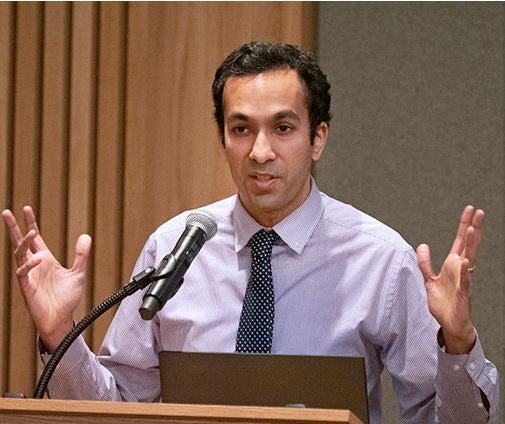CHIBE and PAIR Host 2020 Roybal Mini-Symposium


Penn’s Center for Health Incentives & Behavioral Economics (CHIBE) hosted its first-ever virtual, joint Roybal mini-symposium with the Palliative and Advanced Illness Center (PAIR) on October 1-2, 2020, with more than a dozen research presentations on a variety of topics like racism, COVID-19, financial incentives, and nudges.
In prior years, CHIBE has hosted its annual retreat at places like the Hershey Hotel, the Skytop Lodge in the Poconos, and Congress Hall in Cape May, NJ, but CHIBE’s 12th annual retreat took place in our own faculty and staff’s homes, due to the COVID-19 pandemic.
“You have all been busy and making lots of important contributions,” CHIBE Director Kevin Volpp, MD, PhD, said in his opening remarks. “I admire the fact that so many of you are the kinds of people who run into burning buildings to help when a crisis hits, like COVID.”
Also new this year was the joint format with the PAIR Center, which received support from the National Institute of Aging (NIA) last fall to create the Penn Roybal Center on Palliative Care in Dementia.
“It was incredibly fortuitous when the NIA expanded its Roybal program in a way that made it possible for us to apply for one of their dementia-specific variables, and we’re fortunate to be one of four institutions in the US to be awarded,” PAIR Director Scott Halpern, MD, PhD, said in his remarks.
The mini symposium consisted of 13 research presentations, a virtual Twitter poster session, a break-out session on research values and priorities at the intersection of COVID-19 and structural racism, and a keynote address by CHIBE-affiliated faculty member Atheendar Venkataramani, PhD, MD, MPhil, on structural racism, economic opportunity, and health disparities.
The research presentations covered a range of topics, including: the cost effectiveness of financial incentive programs for smoking cessation, racial differences in ICU triage for sepsis, personalizing treatments for habit formation, wellness programs and workplace productivity, and lifestyle and mental health disruptions during COVID-19. Find the full list of presenters and their topics here.
Dr. Halpern commended the presenters for the quality of their work as well as the diversity of methods they used, such as big data analyses, implementation science, cost effective analyses, qualitative work, cohort studies of disparities, and randomized field experiments.
“It’s really inspiring to see such well-specified applications of different methodologies to a broad range of problems that makes me so optimistic for the future of our centers and the impact of the work that we’re all doing,” Dr. Halpern said.

Dr. Venkataramani served as the event’s keynote speaker, delivering a talk on structural racism that explored how it leads to declines in people’s economic opportunities. He also spoke about policies that have been implemented to address structural racism and some of the challenges that have arisen. He cited research showing how policies like minimum wage increases, Medicaid expansion, and affirmative action have affected economic opportunity and health. In addition, he highlighted a few areas where behavioral science can be helpful in combatting structural racism, including:
- Finding ways to build empathy and change minds
- Identifying blind spots
- Identifying where agents and systems may react in countervailing ways to reproduce the same inequalities
“Structural racism is a hard problem,” Dr. Venkataramani said. “It takes many different faces that change over time. Yet there were some policies that were really effective in reducing racial gaps in both opportunity and health. …There’s still a gap of about four or five years in life expectancy, and there are still major gaps in wages and in the way people are perceived in society. Those are still sizable, still large, and I think requires new types of thinking. I think this fundamental cause approach, along with behavioral science, could really be part of the solution moving forward.”
“As Atheen said, we have a real opportunity as behavioral scientists to contribute to one of the biggest challenges of our time – systemic racism,” Dr. Volpp said in his closing remarks. “…I think our role as behavioral scientists is to try to find hidden biases that people may not be aware of and to really try to dig through the type of careful data analytic work that members of this group do and think about theory and experiments where we can become a countervailing force to further good and help to improve health for those who are not doing as well in this country.”
Dr. Volpp also noted that CHIBE and PAIR have created a taskforce called the CHIBE/PAIR Committee for Antiracism and Social Change (CASC), which has over 30 members who are working together to find ways to combat racism and further social change within our ranks.
The mini-symposium also featured a virtual Twitter poster session, which can be seen below. Attendees were encouraged to vote for their favorite poster, which resulted in a tie.